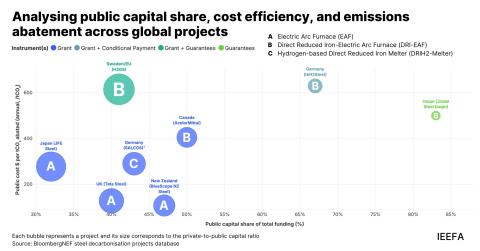IEEFA comments to NY State Public Service Commission on National Grid’s 20 Year Plan
Download Full Version

Key Findings
National Grid’s 20 Year Plan declares an intent to eliminate fossil fuels from its existing gas network by 2050, but plans to achieve this using green hydrogen.
IEEFA is concerned that hydrogen, which presents significant shortcomings and unanswered questions, is not suitable for the role described by National Grid.
Hydrogen as an energy source is not ready for prime time, and in the coming years it will likely be eclipsed by electrification, battery storage and other options.
For economic, environmental and public safety reasons, National Grid should reconsider its proposal regarding hydrogen and hydrogen blending.
Introduction
National Grid’s 20 Year Plan declares an intent to eliminate fossil fuels from its existing gas network by 2050, but it plans to do so, in part, “by delivering renewable natural gas and green hydrogen to our customers” to address the energy needs remaining after building electrification and other demand reduction measures are implemented (see p. 16 of the Plan).
IEEFA’s comments focus on the “green hydrogen” portion of that plan.
Under its proposed Clean Energy Vision scenario, as described on pages 27-28, National Grid projects that 20% of non-residential users will rely on 100% hydrogen fuel by 2050 and 67% of industrial energy use will be 100% hydrogen. It further projects that all pipeline gas will be hydrogen-blended at a rate of 20% by volume (7% by energy) by 2050. Such a plan entails a heavy reliance on hydrogen as an energy source.
IEEFA is concerned that hydrogen, which presents significant shortcomings and unanswered questions, is not suitable for the role described by National Grid. National Grid makes several assertions about hydrogen that could be confusing, and fails to present important points of information that would better allow the New York State Public Service Commission and the public to evaluate options.
National Grid’s reliance on hydrogen is more likely wishful thinking than real planning. The chemical is hard to manage, and requires enormous infrastructure development and significantly expanded monitoring. The costs and burdens are not justified by the limited impact it is likely to have, especially in blended form, on carbon dioxide emissions.
The filing also fails to analyze and address hydrogen’s combustion-related emissions of nitrogen oxides (NOx), including emissions of nitrous oxide (N2O) from combined combustion of hydrogen and natural gas, as further discussed herein.
Hydrogen as an energy source is not ready for prime time, and during the years it would take to bring the chemical into such a position, it will likely be eclipsed by electrification, battery storage and other options.















